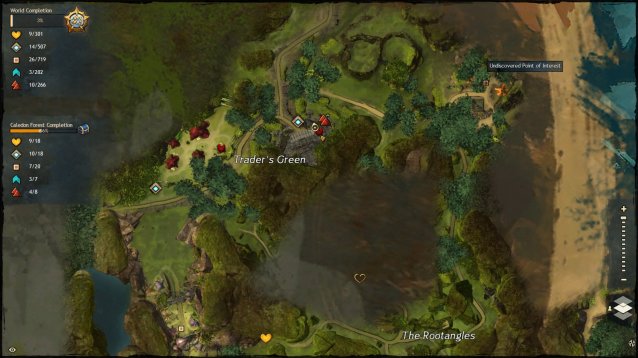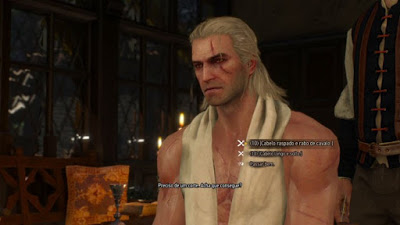


Part of the joy of open-world games comes from the rare moments of seemingly accidental beauty they provide. These are the games where it's possible to, say, come to the summit of a hill in Skyrim and see a foggy mountain in the distance from a new perspective. Or it's possible to creatively find yourself in a place you didn't expect to be in, like crashing a car to create a bridge in Far Cry 2.
Massively multi-player role-playing games since Everquest may have been built on a model of strictly regimenting player behavior, but even those their powerful moments. My favorite zone in World Of Warcraft was probably the corrupted Elven forest of Feralas, a region which seemed to be in a perpetual sunset, enhanced by some of the better music in WOW. I always looked interesting ways to view World Of Warcraft's geography. In Nagrand, I took my flying mount to each island hovering above the land. All were essentially barren, but I could see the beauty below, and anticipate what might be above.
I once tried to swim from the Swamp of Sorrows in the far southeast to the Badlands slightly north of there, but the cliffs surrounding Azeroth prevented my access, and so I slowly made my way north, crossing over half of the continent, until I arrived at the Hinterlands. I found some beauty in the recycled, lifeless cliffs. I also had fun trying a jump my way up those cliffs, and even made some impossible progress. There are a bunch of players who hop around the world looking for surprise holes or ways to reach the previously unreachable. Some do this to cause chaos, and grief other players. But many are just looking for the real boundaries of the game world. I liked watching them do this and reading about their exploits, but rarely felt encouraged to do so myself.

When I started up Star Wars: The Old Republic, there were special “Holocrons” scattered across the maps, which required a certain level of searching nooks and crannies early on. As you progressed into more difficult zones, finding the holocrons became more of a matter of looking them up on Google or YouTube. The idea of pushing players into the more hidden areas of the map is a good one, but the rewards promised by the holocrons—permanent stat increases, unavailable anywhere else—made them feel more mandatory than fun. Combined with the need to research their locations externally, they became more of an annoyance than a chance to show off the detail of the game world.
There is a sweet spot of beautiful visuals, of mechanical reward, and of exploratory gameplay that one game, finally, managed to hit. Guild Wars 2 has several “vistas” scattered throughout each of its regions. The point at the end is labeled on the map, and you get an experience reward when you find your way there. But actually getting to the vistas can be difficult. Not usually enough that you have to look up how it's done—but difficult enough that when you figure it out, there's a rush of success. And then, the reward of the game showing off its detailed, beautiful locations. Nothing gave me more joy in Guild Wars 2 than finding these points on the map, trying to access them, and then discovering how the game encouraged me to see its world.




 Madden NFL 12 Game Guide
Madden NFL 12 Game Guide 9 Ancient Video Game DRM Schemes
9 Ancient Video Game DRM Schemes Can A Video Game Jump Start Your Next Rewarding Creative Hobby?
Can A Video Game Jump Start Your Next Rewarding Creative Hobby? Tomb Raider Guide (Part 3)
Tomb Raider Guide (Part 3) The Witcher 3 Wild Hunt: how to shave / cut Geralts beard / hair
The Witcher 3 Wild Hunt: how to shave / cut Geralts beard / hair